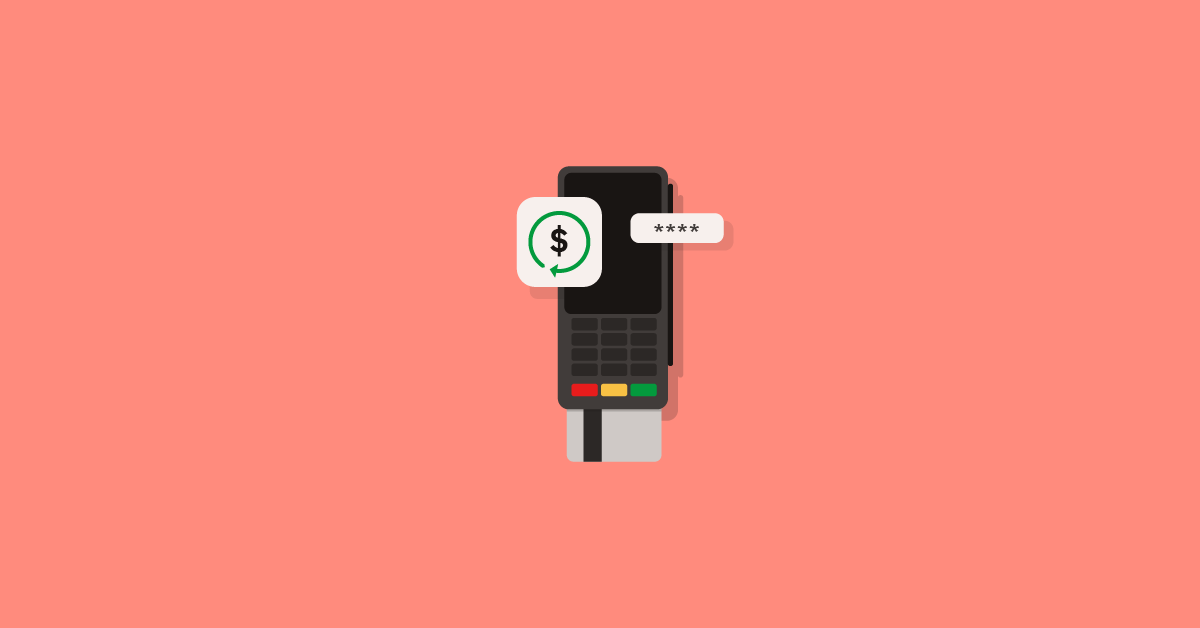
When the first debit cards were introduced to the American public, they weren’t exactly easy to get—and they were nowhere near as convenient as they are now. The expansion of ATM and debit networks in the 1990s led to widespread adoption of debit as an alternative way to pay, replacing checks and even cash for many consumers.
The introduction of chip-and-pin cards has led to the rise of pin debit, thanks in part to its increased security. Debit getting better is good for all of us, but for merchants, it means dealing with multiple different cards for payments—credit cards, traditional debit and pin debits.
Behind credit cards, debit is the second-most commonly used payment method at retail stores. Debit cards are regulated differently than credit cards, including for rules around transaction disputes and refunds. That’s why it’s important to understand how these refunds work. Especially so if your business accepts a variety of payment methods.
Pin debits, adopted widely in the US in 2015, have their own unique rules, particularly when it comes to pin debit refunds.
If you’re a merchant in Canada… Good news: Interac makes the refund process simple. You should have no problem refunding debit transactions of any kind, even the next day after the transaction was processed, provided the cardholder returns to you with the card in person. The information found in this guide is primarily relevant to retailers in the US. You may be more interested in our guide to the top 7 questions to ask when choosing your payment processor.
In this blog, we’ll go over:
- What is pin debit?
- The difference between pin debit, debit and credit card refunds
- How to process a pinless debit refund
- How to process a pin debit refund
- Alternatives to pin debit refunds
What is pin debit?
Pin debit is when a customer enters a personal identification number (PIN) to complete a transaction with their debit card at point of sale. Like most debit payments, the card is typically connected to the customer’s checking account. Because each card requires a password, pin debit transactions are very secure .
You may be surprised to learn that pin debit card refunds work differently than signature debit card refunds. Signature debit transactions involve the merchant requiring the customer to sign their receipt of purchase. These payments are processed via card networks like Visa or Mastercard.
Pin debit vs debit vs. credit card refunds
When you process a credit card refund, whether the transaction was made with a pin entry or not, the request is processed on the card issuer’s network. Within a few business days, the cardholder will get their money back, and you’ll be debited the refunded amount.
Similarly, processing a debit card refund from transactions made without a pin on cards like Mastercard or Visa Debit works much the same way. You make the refund request on the issuer’s network, and the cardholder receives their funds. Because they’re using the same major network as credit cards, these kinds of debit transactions can be processed without a hitch for merchants.
However, pin debits managed by networks outside of the major credit card providers are much different. Banks use network partners like NYCE or Accel to allow clients to use their debit cards in pin transactions. When someone makes a pin debit transaction, it’s processed on the interbank network. Banks in the United States may be signed with any one of a number of networks, while banks in Canada generally partner with Interac.
In summary: transactions made with credit cards (with OR without a pin) and debit cards (without a pin) are processed on a different network than pin debit transactions. Because of this, pin debit refunds have their own set of limitations.
Processing pinless debit card refunds
As we mentioned earlier, it’s easier to process a debit card refund from transactions made without a pin. It’s important to remember the amount of time it takes for the refund to process depends on the card network the customer uses. But how exactly does it work?
After the customer returns their purchase, the merchant has to approve the refund request. After this, the funds that were initially sent to the merchant’s account must be sent back. Depending on how long it takes for the merchant to approve the request, the funds are then authorized to be returned.
Some requests may take longer to process, such as large purchases. Usually at most, it can take up to 10 days for the customer to see the money in their account. On the shorter end, refunds can take between 2-3 days.
Processing pin debit refunds
This key difference in how a transaction (or refund) is processed means that pin debits are much harder to refund than any other type of card. This is because of how pin debit transaction data is stored and processed on their networks.
When a merchant makes a sale with a pin debit, the processor stores that information. Every day at 4 pm EST, the stored transactions from that day are pushed to the relevant networks, and the processor then starts a new file. All transactions from 4 pm EST to 4 pm EST are grouped together and sent where they need to be sent for your business to receive funds; after that 4 pm deadline, a new group of transactions is created. A sale made at 3:30 pm EST and a sale made at 5:30 pm EST will be sent in two different groups because of that deadline.
Time considerations
Because of this system, pin debit refunds are technically impossible to process past the 4 pm EST deadline; the file containing the group of transactions has already been sent to the networks that need to process the data, and you can’t really get it back. You can only issue a pin debit refund if done before the daily cutoff on the current processing cycle—like 4 pm to 4 pm.
The only way to refund a pin debit transaction is to process the refund during the same processing cycle that the transaction was made. Say, a customer buying something at 10 am EST and returning it at 2 pm EST. In this case, the refunded transaction will be pulled from your daily payment processor file instead of being sent out to a network; essentially, you are removing all data about the transaction from the file that is grouping your pin debit transactions together before it can be pushed for processing, so it’s as though the transaction never took place. The funds will never be debited from the pin debit customer’s account. The hold placed on the funds for processing is canceled.
If you need to perform a pin debit refund before the daily cut off, you can do so through your payment terminal, just as you would a credit card refund.
However, the nature of returns is such that the pin debit customer will likely not be back on the same day before the daily cutoff—people rarely return items the same day they bought them. You will need to refund these customers in an alternative way.
Pin debit refund alternatives
Because you cannot process pin debit refunds after they’ve been processed, you will need to refund them in alternate ways: store credit, cash or product exchanges, for example.
When you’re deciding on your refund policy, keep in mind that an overarching policy for all refund types will be much simpler to deal with than a refund policy that treats each payment type differently. Whatever refund method you decide is appropriate for pin debit refunds should blanketly apply to credit card and non-pin debit refunds as well. Everyone who requests a refund could be given store credit, for example.
You may be tempted to not offer any refunds to eliminate the need to maintain a refund policy at all. Be warned that while debit card chargebacks of any kind are exceedingly rare, upset credit card using customers can successfully request chargebacks much easier than debit customers can, and it may be worthwhile for you to accept debit cards partly because of this reason. Chargebacks are disputes initiated by customers via their bank to reverse payments on finalized transactions.
Chargeback risks
You can be punished for too many credit card chargebacks being filed against you, so you should always offer some form of refunds. If you’re a medium- to large-sized business, it’s even more important to provide some method of refunding. That’s because customers can turn away from companies that don’t offer refunds at all or whose policies are limited. There’s often more flexibility for small businesses in this regard.
That’s also why it’s helpful to use a payment processor that assists with chargebacks. For instance, Lightspeed Payments handles chargeback disputes, working with merchants to send evidence as required. Not only that, but you can easily refund customers through a series of simple steps from your dashboard.
Understanding pin debit refunds
Different card types have different refund methods. That’s why as a business owner, it’s important to understand the ins and outs so you can form a policy that best suits your business.

News you care about. Tips you can use.
Everything your business needs to grow, delivered straight to your inbox.


![11 Tips To Make Your Pop-Up Shop a Roaring Success [For Retail Store Beginners and Pros Alike]](https://blog-assets.lightspeedhq.com/img/2021/06/2da3ae10-blog-hero_pop-up-shop.jpg)